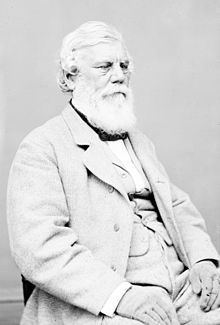Lieutenant J. F. Ervin Succeeded by William P. Miles Preceded by James L. Orr Role U.S. Congressperson | Name William Jr. Preceded by James Henry Hammond Resting place Magnolia Cemetery | |
 | ||
Education University of South Carolina | ||
William Aiken Jr. (January 28, 1806 – September 6, 1887) was the 61st governor of South Carolina, serving from 1844 to 1846. He also served in the state legislature and the U. S. Congress, running unsuccessfully for Speaker of the House in 1856 in “the longest and most contentious Speaker election in House history.”
Contents
Early life
Aiken was the child of William Aiken, the first president of the pioneering South Carolina Canal and Rail Road Company. Unfortunately, William Sr. was killed in a Charleston carriage accident and never saw his namesake town of Aiken, South Carolina. Aiken graduated from the College of South Carolina (now the University of South Carolina) at Columbia in 1825 and engaged in agriculture as a planter, entering politics in 1837. He was a member of the State House of Representatives 1838–1842, and served in the State Senate 1842–1844. His term as governor ran from 1844 to 1846.
Congressional service
Subsequent to his service as governor, Aiken served in the U. S. House of Representatives for the Thirty-second, Thirty-third, and Thirty-fourth Congresses (March 4, 1851 – March 3, 1857). In December 1855, Aiken was a leading candidate for Speaker of the House of Representatives. After two months and 133 ballots, Aiken lost the race to Nathaniel P. Banks by a vote of 103 to 100, in what has been termed the “the longest and most contentious Speaker election in House history”.
Personal life
Aiken was married to Harriet Lowndes Aiken. He was a successful businessman and planter and lived in Charleston, South Carolina. Aiken's first cousin, D. Wyatt Aiken served as a Confederate States Army officer and five-term U.S. Congressman. Aiken died at Flat Rock, NC, September 6, 1887, and was interred in Magnolia Cemetery, Charleston, S.C. His house, the Aiken-Rhett House, is part of the Historic Charleston foundation.
